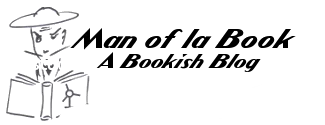We may think our problems are uniquely human. But animals and humans get the same diseases. How might we better understand human health and illness if we harnessed knowledge from veterinarians, the doctors that take care of other animals?
Zoobiquityexplores how jaguar breast cancer, dolphin diabetes, flamingo heart attacks, canine PTSD—and more—are transforming human medicine.
The publisher is giving away one copy of this book –to enter fill out the Rafflecoptter form at the end of the post.
Buy this book inpaperor inelectronicformat*
• 32% of cats will die of cancer, mostly lymphoma and leukemia.
• Equine sunburn leads to cancer in light-skinned horses; so common it’s called “gray horse melanoma.”
• Tortoises are becoming so fat they can’t pop their heads in and out of their shells.
• Vets have a new nickname for overweight birds: perch potatoes.
• The brilliance of diets such as Atkins, South Beach and the Zone is that they’re consistent with the older preference for protein that we see in species with whom we share common ancestors 300 million years ago.
• Zoobiquity identifies specific animal-based food and eating preferences which may sabotage a modern dieter’s healthy-eating efforts but can also be harnessed to enhance his or her health.
• Many animals, from small mammals to reptiles to amphibians to fish, when faced with threat, respond with an instant and major reduction in heart rate. This “invisibility” response is felt to be anti-predation in nature.
• Wallabies in Tasmania sneak into opium fields and get high.
• Cedar waxwing birds crash into buildings after eating fermented holly berries.
• Water buffalo sample opium poppies and then show signs of opiate withdrawal.
• Binge-eating, secret-eating, nocturnal-eating and food-hoarding. These behaviors are considered pathological by psychiatrists. But animals exhibit all of these behaviors, suggesting that the root cause in humans may be linked to ancestral eating strategies.
• Many species consume the vast majority of their calories under cover of darkness as a self-protective strategy. Human night-eating shares some neuro-circuitry with this
animal behavior.
• Food hoarding takes many forms in the wild and is a smart survival strategy. In humans, food hoarding (seen most commonly in children) also shares neuro-circuitry
and neuro-endocrine pathways with animal behavior.
• When stressed out by spiders, grasshoppers binge on sugar and carbs
• Feather-picking disorder in birds likely shares neuro-circuity with trichotillomania (eyelash and hair plucking disorder in humans)
• Excessive hand-washing in human OCD patients connects to over-licking/grooming syndromes in cats. Grooming and self-cleaning occupies substantial percentage of the waking hours of seal, birds, rabbits. Even snakes, lacking napkins and hands, finish their meals by wiping their faces on the ground.
Buy this book inpaperor inelectronicformat*
Giveaway
Giveaway ends: May 17, 2013
US Shipping Addresses Only
No PO Boxes
Winners will have 24 hours to write back with their address, otherwise an alternate winner will be picked
Congratulations: bethvollbach@
*Amazon links point to an affiliate account


No Comments